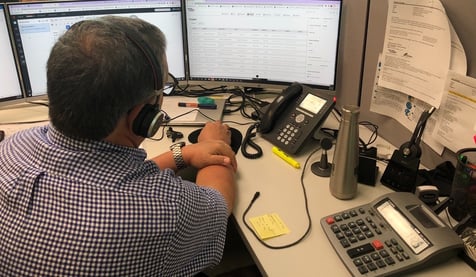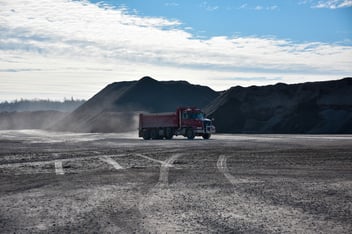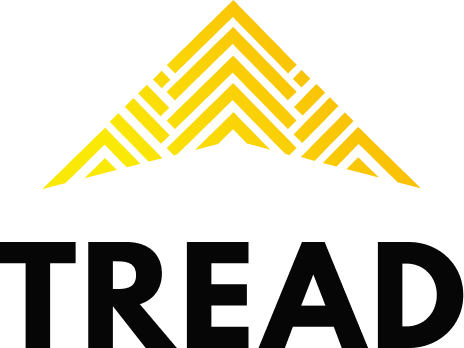How Contingency Planning Can Save Your Business
Hire the right staff.
Build out your daily operations.
Run a smooth ship.
Then all of a sudden one person leaves and you’re left scrambling.
By definition, a contingency plan is designed to help a company handle a significant future incident, event, or situation that may or may not happen. In this post, we’ll be specifically addressing employee departures.
It makes sense why companies don’t want to plan for employee departures, it’s a grim topic.

If the employee is good at their job, why would you ask them to jot down everything they do step by step? You don’t want to make it seem as if you’re planning on replacing them. Besides, they’ve worked here for ages, why would they leave?
But any employee, even those who have been at one company for decades, can always leave. And just that situation happened to one of Tread’s customers. In one week, the Dispatcher and Operations Manager both left the company. These two were pivotal to ensuring operations run seamlessly, so, what do you do now? The company had to continue running its operations efficiently, they couldn't miss a beat.
On average, 32% of customers are willing to walk away from companies they trust after a single bad experience. It’s hard enough to secure trucks as is, give drivers a bad experience, and it’ll become next to impossible.
How does a company adapt to the only Dispatcher and Operations Manager leaving?
Dispatch was the first problem to tackle. In this particular company's case, they were running more than 30 trucks a day.
They previously only had a single dispatcher, so the load couldn't be shifted to someone else who knew the platform well. The person who had to fill in for the role actually ended up being the VP of Business Operations.
And while the VP knew the company’s ongoing projects like the back of his hand, he knew little of how the previous dispatcher worked their magic.
Luckily, Tread maintains a long history of all the jobs a company has ever dispatched, including what jobs went together with what projects, along with past schedules for ongoing projects.
%20and%20Sarhan%20(John%20Aarts).jpg?width=461&height=310&name=Tyler%20(Tread)%20and%20Sarhan%20(John%20Aarts).jpg)
Tread’s industry-leading customer service team hopped right into the action with the VP, talking him through the process of using Tread’s dispatch functionality. Within an hour, the VP was able to navigate through all of their open projects, fill all material requests, and dispatch the full day’s schedule. All this with no prior dispatching experience.
Before Tread, no one could have dreamed that someone could step in the day of as an organizational stop-gap. Significant pieces of information such as subcontractor truck counts, preferred hours, and more, all used to live inside a dispatcher's head, but now it’s all noted down in Tread.
Once they put out the fire of that day’s dispatch, Tread’s customer success representative walked the VP through all the other features a dispatcher could possibly need to access, and what to do in common situations.
The VP and one other operations team member who put his hand up were both able to be fully trained in one day. Both of them currently handle the dispatch responsibilities, in addition to their own, and are doing so without any negative impact on the business.
The company has yet to find a suitable candidate to take on the dispatch role full-time, but following this experience, they’re now confident that the person they hire will not only be able to take over dispatch responsibilities but will also be able to utilize data to improve performance and grow existing relationships with subcontractors.
That’s how Tread helps with contingency issues.
What else can Tread do?
Because Tread stores all information digitally, it makes it incredibly easy for new, or temporary employees to pick up right where the previous ones left off.
Even if someone is unfamiliar with Tread’s platform, our customer support team will get them up and running in no time.
In this case, it was dispatch, but it offers the same benefit to just about every role within operations, accounting, and more.
Some of the features that make Tread seamless for new employees is its ability to provide:
- A clear understanding of what sites needed what material.
- A bank of saved geofences for all pits, quarries, and delivery sites.
- Contact details for all subcontracted and internal trucks.
- An index that identifies subcontractor leaders and high-performing partners.
- Hardware-free tracking, allowing users to quickly see where every driver is, including subcontractors and 3PLs.
- Custom filters to let users quickly find the drivers needed.
- Multiple layers of visibility - meaning that you can see the contact details for drivers that your subcontractors dispatch to, eliminating needless back and forth in your day.
- Bulk dispatching based on historical work on a project.
Want to learn more about how Tread’s platform can support your contingency plan and potentially save your business?
Read On

Effective Construction Equipment Management Guide
Selecting the right equipment for a construction project is crucial when it comes to budget,...

13 fleet truck fuel management best practices
Fuel is the second-largest fleet-operating expense year after year. On average, it eats up 60% of a...

How Tread Customers Integrate Tech into Construction
For companies looking to integrate digital solutions into their workflow, success using a software...


